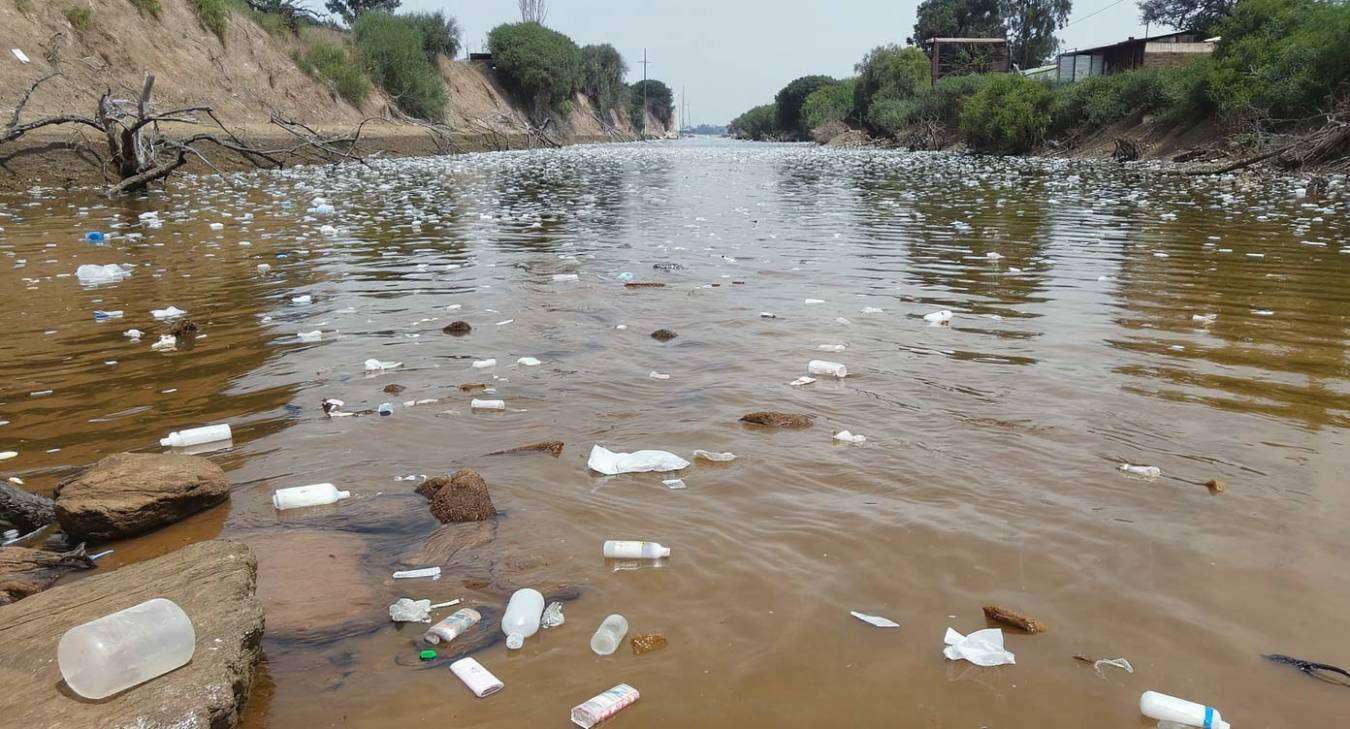plastics-polution-Mozambic: a growing burden for rivers
In 2022, Mozambique generated more than 1.2 million tons of plastic waste, of which barely 2% was recycled. Rivers like the Zambezi or the Limpopo serve as collectors for this waste, transporting thousands of tons of plastic from the interior of the country to the Indian Ocean each year. According to a study by UNEP (United Nations Environment Programme), plastics-polution-Mozambic in watercourses is increasing by 6 to 8% per year, particularly around large cities like Maputo or Beira. Microplastics, invisible to the naked eye, are now infiltrating drinking water and fish consumed locally, posing an immediate health risk to millions of people.
On the ground, fishermen in the Zambezi delta are noticing a scarcity of fish and an increasing presence of debris in their nets. “Before, we fished for shrimp, now we mostly bring up bottles,” says José, a fisherman in Chinde. Analyses conducted by Eduardo Mondlane University confirm a widespread contamination of river sediments. The plastics-polution-Mozambic thus threatens fishing, the main source of protein for the population, and jeopardizes the regional food balance.
Awareness remains timid. Waste collection infrastructures are insufficient, and the massive use of plastic bags persists despite official bans. However, the consequences of plastics-polution-Mozambic go beyond national borders: each flood carries tons of plastic into the ocean, exacerbating marine pollution and the global ecological crisis.
Plastics-polution-Mozambic: alarming health and food impacts
The effects of plastics-polution-Mozambic are not limited to the environment. Research conducted by FAO and WWF shows that the contamination of Mozambican rivers leads to the ingestion of microplastics by aquatic fauna. In humans, the consumption of contaminated fish or crustaceans multiplies the risks: endocrine disruptors, digestive disorders, and even cancers according to some studies. In riverside villages, rates of gastrointestinal diseases are skyrocketing, correlated to the plastic pollution of water.
Beyond health, food security is seriously compromised. The presence of microplastics in soils and water reduces the fertility of agricultural land and affects the growth of irrigated crops. This phenomenon exacerbates the already chronic food insecurity in some regions. The plastics-polution-Mozambic thus proves to be a real vicious circle, aggravating poverty while undermining the foundations of community resilience.
River ecosystems in peril
Mozambique’s aquatic habitats, known for their biodiversity, are among the most threatened in southern Africa. The plastics-polution-Mozambic leads to the disappearance of endemic species, the suffocation of mangroves, and the proliferation of toxic algae. These imbalances weaken food chains and accelerate the collapse of fish stocks.
Plastics-polution-Mozambic: what solutions to reverse the trend?
In the face of disaster, initiatives are emerging to combat plastics-polution-Mozambic. Local NGOs, like BioFundo, organize waste collections in villages and raise awareness among populations about reducing single-use plastic. The government, supported by the World Bank, is experimenting with the distribution of biodegradable bags and strengthening sanctions against the importation of non-recyclable plastics. Pilot programs for filtering microplastics are underway at Maputo’s water treatment stations.
But the road is long. Without regional and international mobilization, plastics-polution-Mozambic will continue to worsen. Education, innovation, and cross-border cooperation are essential to hope to restore Mozambican rivers. Preserving these vital arteries is to guarantee the health, food security, and future of an entire nation.
Sources:
-
Pollution plastique des rivières – UNEP : Article du Programme des Nations Unies pour l’Environnement sur les risques de la pollution plastique dans les rivières et ses impacts sur des millions de personnes.
-
Rapport FAO sur la pollution plastique : Rapport officiel de la FAO sur l’impact de la pollution plastique, notamment sur l’agriculture et l’environnement.
-
Pollution plastique dans les rivières africaines – WWF Afrique du Sud : Page du WWF Afrique du Sud dédiée à la pollution plastique dans les rivières africaines, ses conséquences et les initiatives de nettoyage.
-
Lutte contre la pollution plastique au Mozambique – Banque mondiale : Article de la Banque mondiale sur les efforts du Mozambique pour réduire la pollution plastique, notamment via des programmes d’économie circulaire et de gestion des déchets.
-
Rapport environnemental 2023 – Gouvernement du Mozambique : Publication officielle du gouvernement du Mozambique sur l’état de l’environnement en 2023, incluant des informations sur la gestion des déchets et la pollution.


